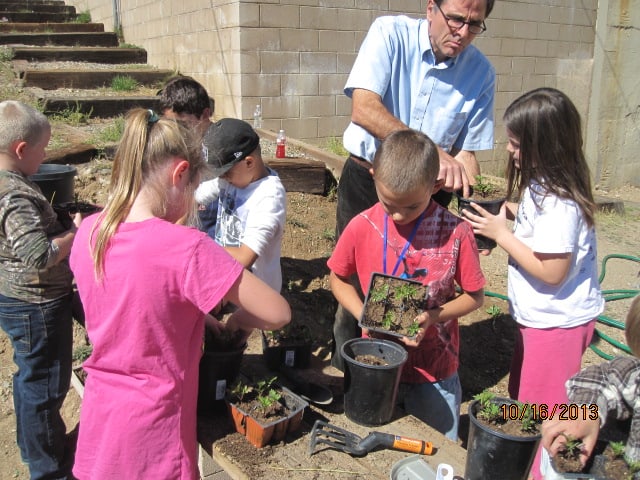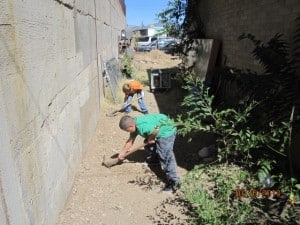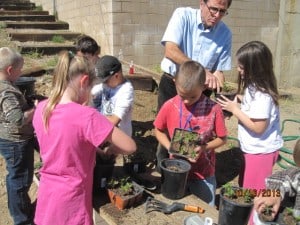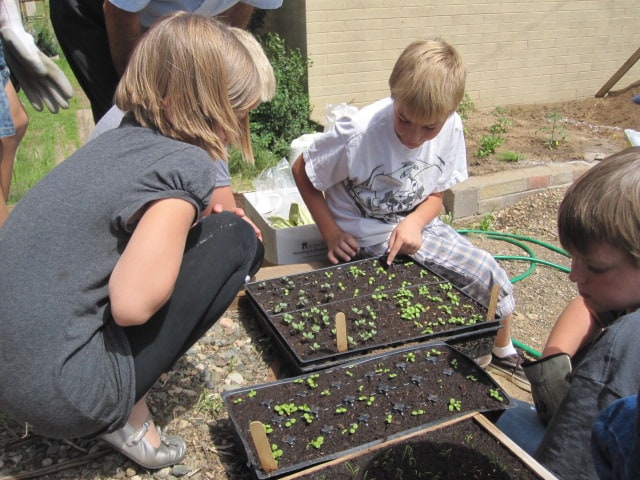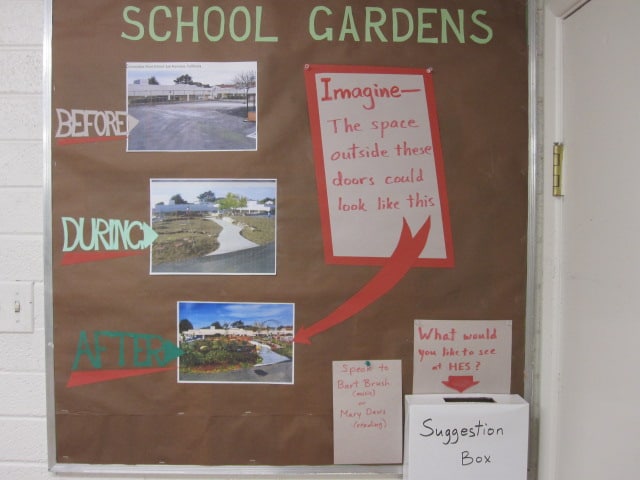Today we have a wonderful story that was sent to us by one of our customers who spearheaded the rehabilitation of an elementary school garden in a small Arizona town.
What this story means to me are the far reaching impacts of positive ripples. Small actions that are taken thoughtfully and with full intention can have far reaching and amazing results, most of which won’t be seen by the person starting those ripples.
When we consider the potential results and implications from this small school garden, we can see effects on the young students, the parents and the faculty and staff. From something as simple as the garden brightening the day of a student or teacher; the crunch of a freshly dug carrot enlightening a parent on what good food should taste like, to the foundational change of a student’s life to pursue agriculture as a result of the experiences, tastes and memories of their first school garden, we cannot imagine the number of possibilities or the cumulative effects that they can have.
This is the perfect example of what we talk about in many different ways – that of personal choice, taking responsibility for our own actions, and helping to create a more positive, better and more healthy world through our daily lives, even if it is small things.
Bart wanted to make sure that we mentioned that all garden work takes place during recess, not instructional time, and that all expenses are paid from donations and not school funds. Here’s Bart’s story about Humboldt Elementary and their school garden!
The school garden at Humboldt Elementary School in Humboldt, AZ was started about 20 years ago by Linneal Nick, one of our former teachers, who raised some money to have the ground leveled and a raised bed built. She is now retired and the garden has not been used for several years. It consists of a raised bed, 40′ long, 8′ wide and two cement blocks high located on the south side of a warehouse building on the edge of our campus.
I teach music at the school, and wanted to start a garden club because of my own love of gardening, which began in the early 60s, despite my role as an “indentured weed puller” in my father’s garden. A few years later I had a 4-H garden, and in college I worked in a greenhouse growing willow leaves for a professor doing research on subspecies of White Admiral butterflies. As an adult, I’ve gardened in upstate NY since 1973, and here in Arizona for the last four seasons.
My wife (retired math instructor from NM State, Las Cruces) and I started the garden club in August, with 3rd graders, because my lunch period corresponds with theirs. We have 20 minutes during the recess that follows lunch, 3 times a week, to work in the garden. Unfortunately our ordinary Arizona soil was used to fill the original bed, so our original task was digging up the beds with pick and shovels, and shoveling the dirt through a homemade screen to sift out the rocks. We mixed in peat-moss, compost and natural fertilizers, and planted radishes, beets, beans, peas and zucchini. In flats, we started buttercrunch and romaine lettuce, onions, marigolds, and red and green cabbage. We bought and transplanted a variety of herbs and three cherry tomato plants, and periodically the children get to transplant various plants into 2 quart pots to take home.
Every work period we have a variety of tasks to do: watering the plants, weeding, planting, picking up litter, eating peas and radishes, tending the birds at three feeding and watering stations, sifting soil, planting bulbs for spring, and–our biggest project–digging the hill next to the garden into four terraces, just like farmers around the world have done for centuries. This, believe it or not, is a favorite job. Third graders LOVE to swing picks, rake rocks, and shovel dirt! We lay out perpendicular lines using a knotted rope to make a 3-4-5 triangle, just like the Ancient Greeks did.
On another side of the garden, we dug a bed for pole beans at the base of a 15′ high retaining wall, topped by a chain link fence. This gives us room for a 20′ high trellis, so come spring, we’ll see how high a beanstalk can grow.
Other plans for the future include a compost bin, worm bed, cold frame, pit greenhouse, gazebo, roof water catchment, shallow pond, and a 30 seat rustic amphitheater for use as an outdoor classroom; also roses, grapes, berries, fruit and shade trees; along with native plants to provide food and shelter for the birds.
Parents and community members are welcome to help out, but I have done no direct organizing in this respect as it is not one of my strengths.
We had few nights of vandalism by two kids new to the area. Three school windows were broken, two of our garden pickaxes were stolen and used to destroy our soil sifter and a door, a portion of the garden was trampled, and plants in flats were strewn about. The perpetrators were soon caught by our sheriff’s deputies, and we don’t expect further problems from them. The garden area and school is surrounded by chain link fencing to afford some measure of protection.
Anyone who would like to volunteer, donate, or ask questions is welcome to leave a message at my school phone, 928-759-4436 or contact me by email.
 The bulletin board is in the teachers’ workroom. I change it every couple of weeks to let them know what we’re doing. The garden, unfortunately, is on the edge of the campus, and off the beaten path.
The bulletin board is in the teachers’ workroom. I change it every couple of weeks to let them know what we’re doing. The garden, unfortunately, is on the edge of the campus, and off the beaten path.
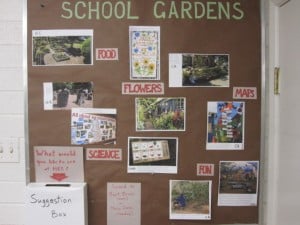 Another update to the school garden!
Another update to the school garden!
 Our compost bin made out of pallets tied together, with the original school garden in the background.
Our compost bin made out of pallets tied together, with the original school garden in the background.
How about the choreography of those two pickaxers? They’re digging up a bed for pole beans next spring, at the base of this 15′ retaining wall, which has a chain link fence on top, so that allows for a 20′ trellis altogether. How high will beanstalks grow?
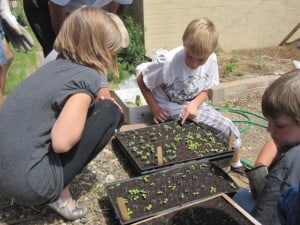 Checking out the progress of recently planted seeds. Watch them grow day by day.
Checking out the progress of recently planted seeds. Watch them grow day by day.
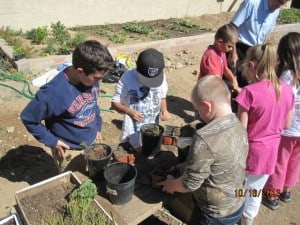 Transplanting time! Learning how to carefully move the fragile seedlings into a larger container so it can continue to grow.
Transplanting time! Learning how to carefully move the fragile seedlings into a larger container so it can continue to grow.
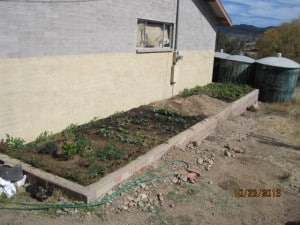 The original school garden growing some fresh veggies once again!
The original school garden growing some fresh veggies once again!

